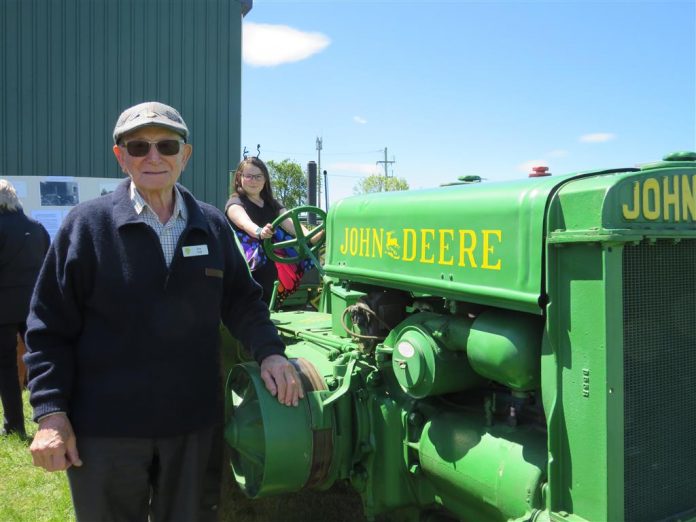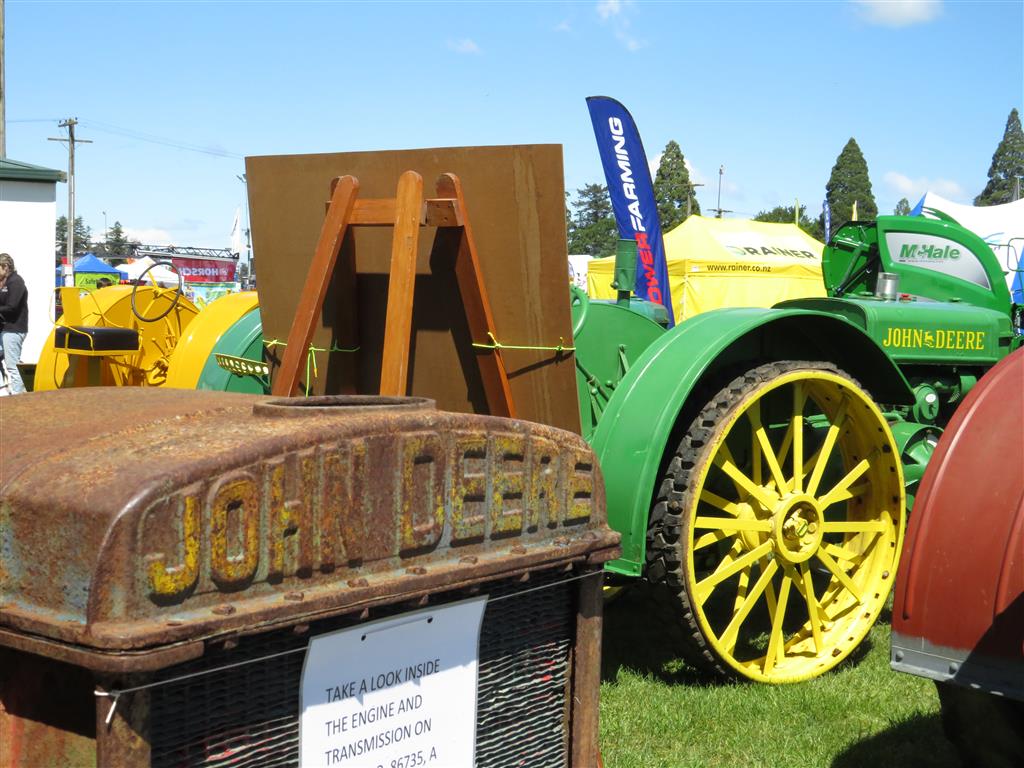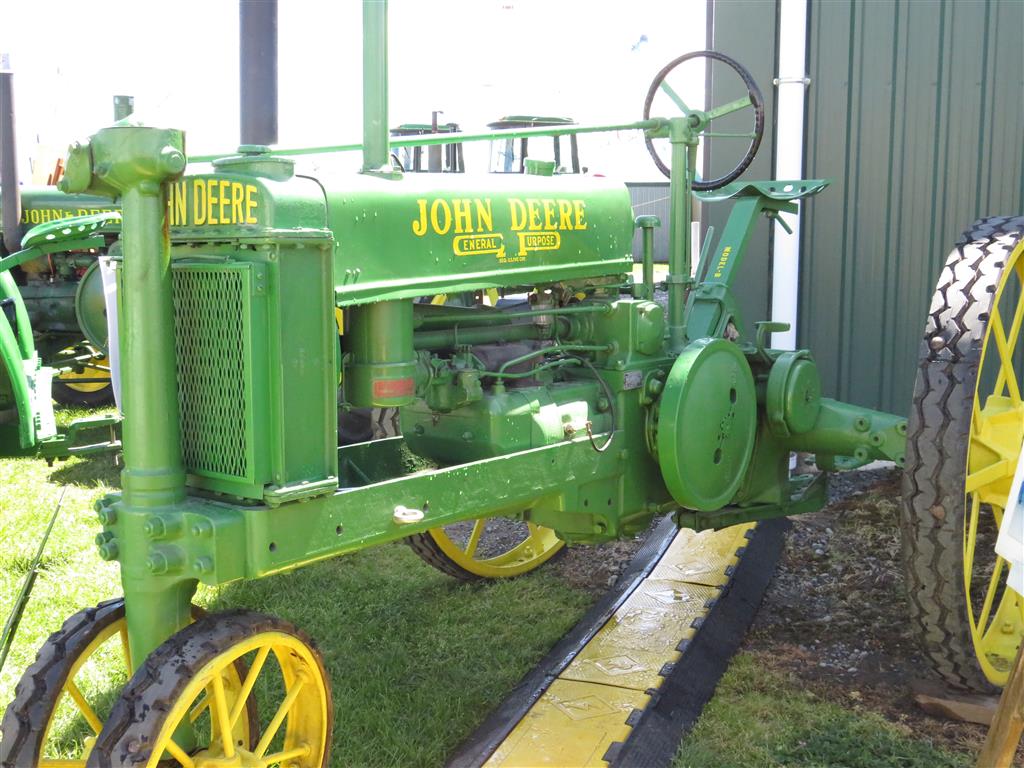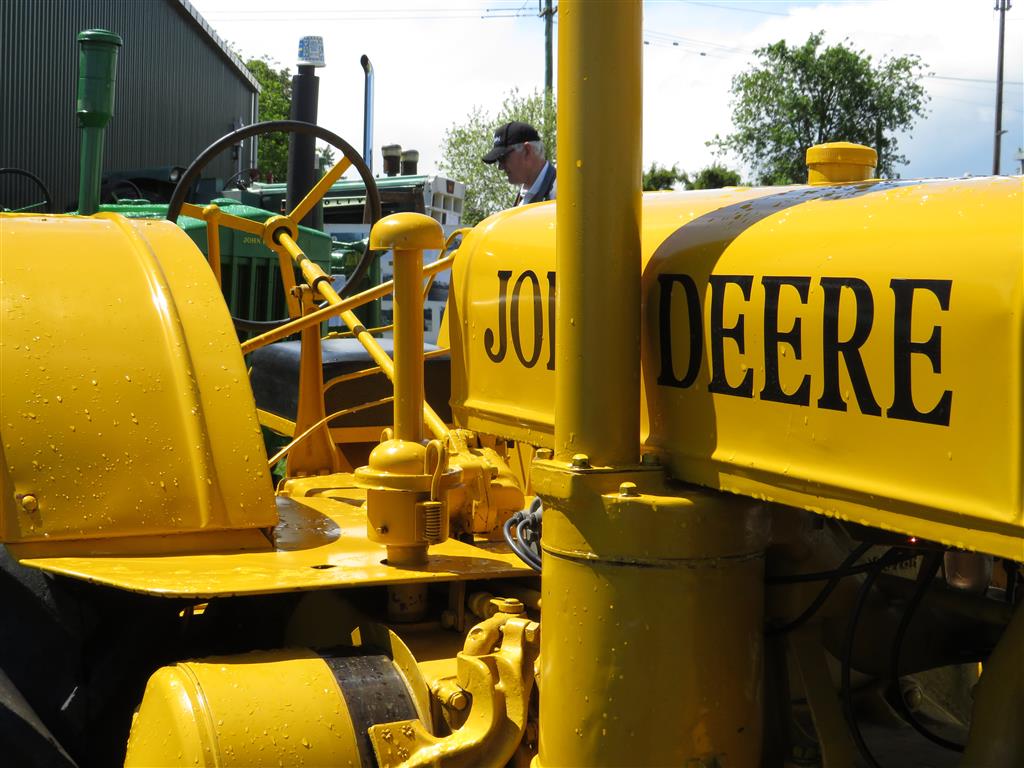
Les Nell has a 1929 John Deere Model D among his vast collection.
It took the parts of four tractors to create.
The back wheels came from Mossburn and the front wheels from Southbridge, he said.
The retired former mechanic/farmer is a die hard John Deere fan.
‘‘I’m a John Deere man. I’ve only got 17 of them,’’ he said, with a twinkle in his eye.
Les, of Barrhill, sat on many John Deere tractors as a boy.
They formed part of a fleet of five John Deeres owned by his father at Staveley.
Les’s parents lived up the road from the dairy factory at Staveley, and used John Deeres for hay mowing and pulling linen for the local flax factory. They also operated buses.
Les, born in 1938, remembers the buses, the area, and the tractors.


The John Deere D was the first tractor made by John Deere in 1924.
The early models had spokes in the flywheel.
It was a big tractor at the time developing 25 horsepower.
They were used on large American farms to do work previously done by horses.
The tractors were easier than taking care of horses and did not require planting crop to feed it.
The model D two cyclinder horizontal lasted for many years.
It was later the external look of the tractor was styled to make it look modern.
The Nell family model D, No.77448, was first owned by Caldwell, in Temuka 1929.
Les had it on show during the Mid Canterbury Vintage Machinery Club’s 100 years of John Deere model D display at the Ashburton showgrounds.

The model D was bought by the Nell brothers of Staveley in the early 1940s and used for contracting and flax pulling. Flax pulling was done during the WW II years.
Flax pulling machines were about a metre wide in front.
The flax plants were pulled out by the roots and tied into bundles.
Some were sent to Ireland for linen making testing, but proved too course for fine linen.
The tractor was sold about 1943 and extensively worked.
Many years later when it was found, there was little of it left.
It took many hours of hunting for parts, engineering, rebuilding and part making to bring it back to life.
It now sits in the Nell family collection.



